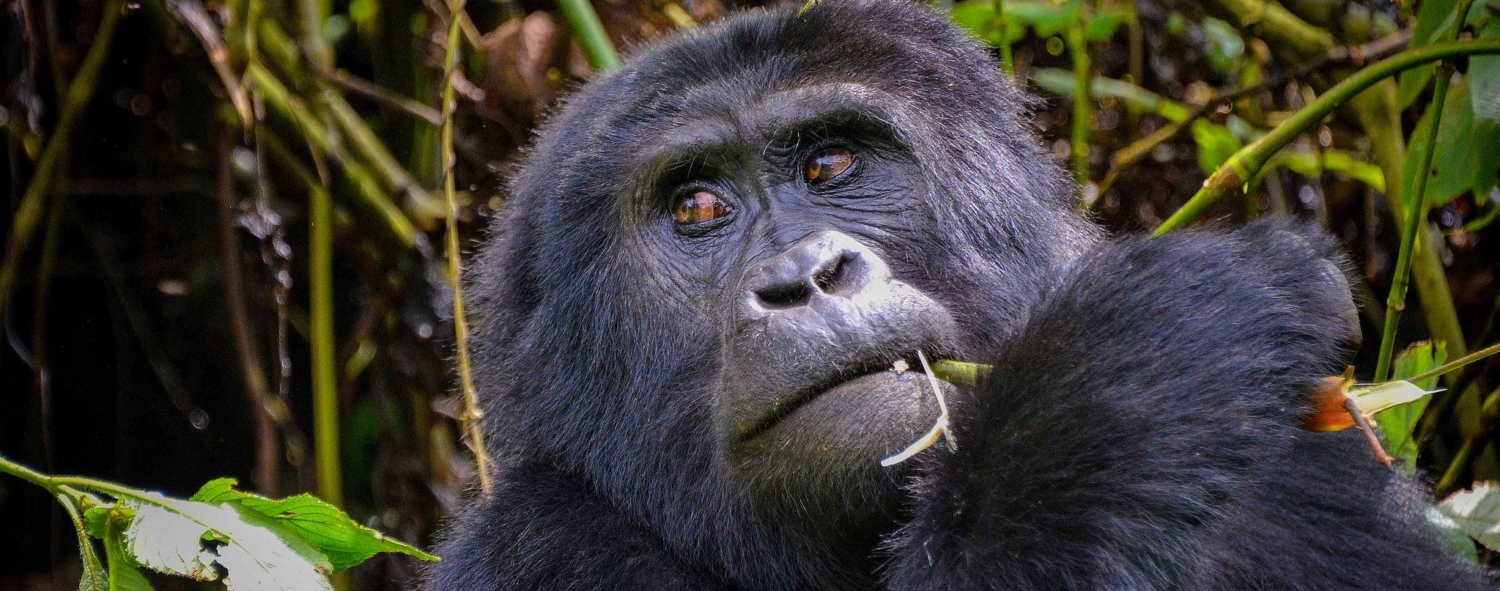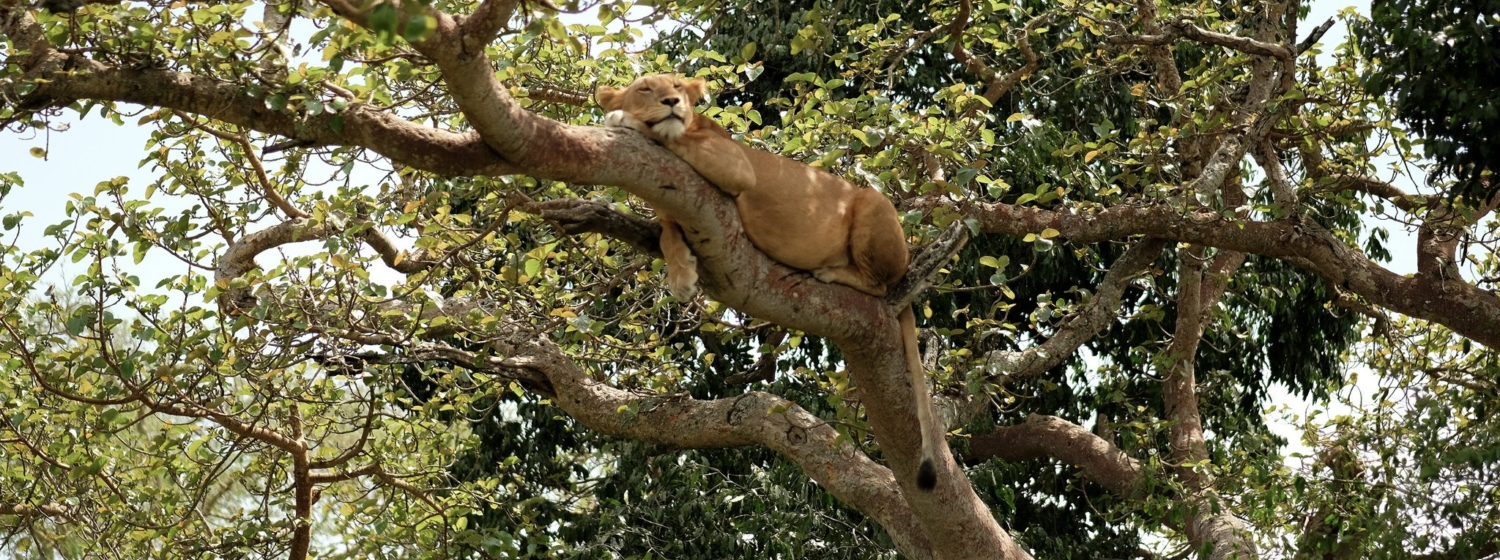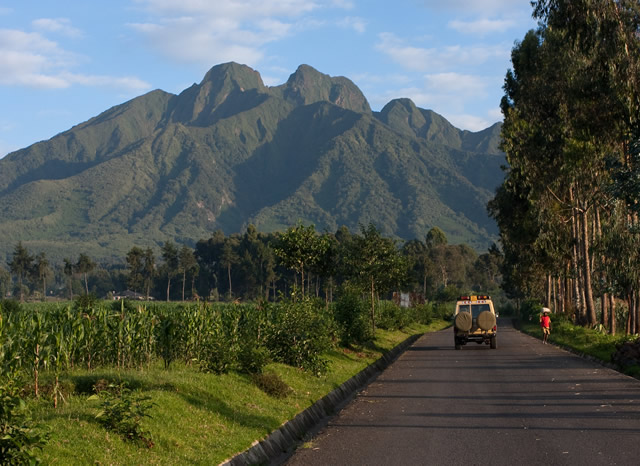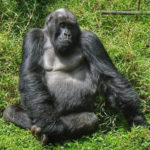Rules and guidelines have been cautiously put in place to try to protect the mountain gorillas’ health and safety. Gorillas are extremely vulnerable to human illnesses and infection, and become strained if too many visitors arrive or advance too closely.
Remember that they are wild individuals, and very defensive of their young. To remain healthy and survive these apes need to be uninterrupted by visitors, and accepted to eat rest and socialize with their own species.
RULE 1: If a tourist is ill, the park staff has the right to repudiate a visit to gorillas.
REASON: To protect the mountain gorillas from constricting any illness or disease from a visitor. Gorillas are very vulnerable to human diseases.
RULE 2: Only one visit to any gorilla group is allowed per day and the number of tourists is limited to eight per group.
REASON: To minimize behavioral disturbance, stress and possible risk of infection.
RULE 3: Visitors must be at least fifteen years old.
REASON: To minimize risk of exposing Gorillas to childhood diseases (e.g. Mumps, Chickenpox Measles) and cold or Flu viruses.
RULE 4: The time spent with great Apes is limited to one hour.
REASON: To minimize behavioral disturbance, stress and possible risk of infection.
RULE 5: Flash photographic is not permitted.
REASON: It can threaten or frighten Gorillas and may provoke an aggressive reaction or charge.
RULE 6: All visitors must remain at least seven meters away from Gorillas at all times. If the great apes approach you to two or three meters (as inquisitive juveniles sometimes do), then visitors should slowly move back to five meters. If this is not possible, then the visitors will be asked to remain still where they are. The guide’s instructions should be followed at all times. Keep your backpack and other items in places where young Gorillas can’t approach and investigate them.
REASON: To minimize disease transmission, strain and behavioral disturbance, to reduce the possibilities of possible future aggression towards tourists; and to prevent the Gorillas becoming too habituated to humans.
RULE 7: Tourists should remain in a group, without spreading out or surrounding the great apes.
REASON: This allows the gorillas plenty of room to move where they want to, without feeling threatened (which may provoke a charge).
RULE 8: Visitors should not sit or crouch whilst watching the Gorillas.
REASON: It can be very intimidating or threatening to Gorillas if you stand taller than they are, and stare. The gorillas may find it as an aggressive display.
RULE 9: Body language is important and visitors should not raise hands or arms, or point, nor stare at them.
REASON: To gorillas there behaviors are signs of threat or aggression.
RULE 10: Visitors should not clear vegetation close to Gorillas so that they get a better view.
REASON: This can disturb or frighten the Gorillas. The guides will clear away vegetation, if it is possible and necessary
RULE 11: If a silverback gorilla beat his chest, displays or charges at you, do not run away. Tourist guides are asked to stop tourists from moving or running.
REASON: Although a charge may be frightening, the safest thing to do is remain quietly where you are.
RULE 12: Eating, drinking and smoking are not permitted near the Gorillas, or within 200 meters of them.
REASON: The behaviors could distract them and cause problems if they approach out of curiosity. Food and other remains can be a source of infection.
RULE 13: Visitors should be as quiet as possible, and whisper. If bitten by Safari ants or struck by stinging nettle, do not scream.
REASON: To minimize behavioral disturbance and avoid frightening and avoid frightening gorillas. Newly habituated gorillas may be afraid to come anywhere near noisy tourists, and if gorillas are already present, they may leave.
RULE 14: If you, the tourist, need to sneeze or cough, turn away from the great apes and try to cover your nose and mouth.
REASON: To minimize the spread of airborne bacteria or viruses that you might unknowingly be carrying.
RULE 15: All wastes and rubbish must be buried. A machete may be borrowed from guides, a thirty centimeter (ten inch) hole dug and then the hole filled.
REASON: Fasces can be highly infectious to great apes and other animals.
RULE 16: All rubbish must be removed from the park, and visitors are asked to be particularly careful not to drop small items, such as, film boxes / canisters, tissues or handkerchiefs.
REASON: Apart from being nasty, rubbish can interest animals, can cause problems if swallowed, and can be a source of germ or disease transmission.






